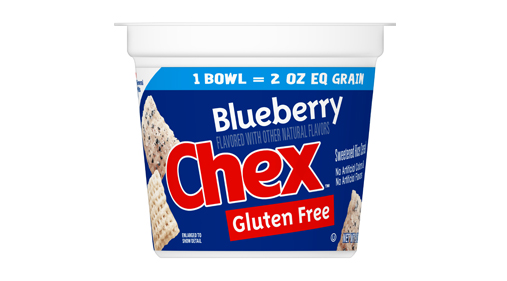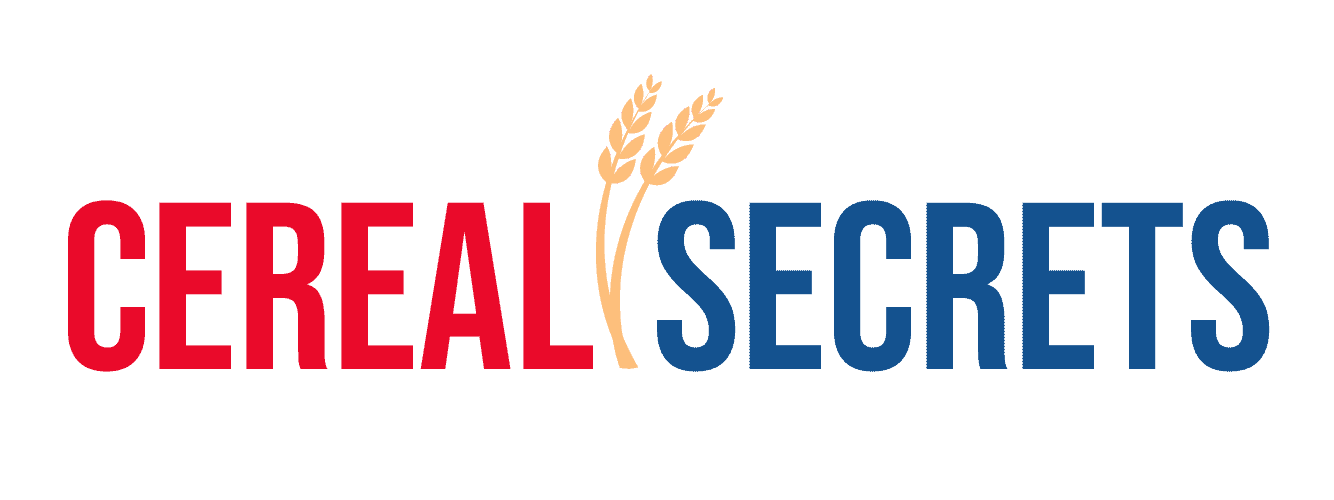Cereal cups are one of the latest trends in the cereal market. They’re an easy and convenient way to take your favorite cereal with you wherever you go, and the disposable cups mean there’s no washing up to do once you’ve finished.
We’ve taken a look at three of the best offerings from General Mills to see how they stack up in terms of health, nutrition, and taste.
Sections
Cinnamon Toast Crunch Cereal Cups
Ingredients & nutrition facts
One container (2 oz) of this cereal contains:
- Calories – 240
- Fat 6g/7%
- Saturated fat – 0.5g
- Cholesterol – 0.0g
- Sodium (salt) – 320mg/14%
- Carbohydrate – 45g/16%
- Fiber – 3g/12%
- Sugar – 17g
- Protein – 3g
- Vitamin A – 20%
- Vitamin C – 20%
- Calcium – 15%
- Potassium – 2%
- Iron – 25%
- Vitamin D – 15%
- Vitamin B12 – 45%
- Thiamin – 45%
- Zinc – 45%
% = recommended daily intake
The ingredients in this breakfast cereal include:
- Whole grain wheat
- Rice flour
- Canola and sunflower oil
- Fructose
- Maltodextrin
- Dextrose
- Cinnamon
- Trisodium phosphate
- Soy lecithin
- Caramel color
For full product details always read the label on the side of the box.
For any allergens see the items highlighted in bold.
Is it healthy?
Kids and adults love this classic General Mills cereal for its sweet taste and crunchy texture. But, the reason that it’s so sweet is that it packs quite an unbelievable amount of sugar into each serving.
Just one of these cereal cups contains 17 grams of sugar which works out at over half of the recommended daily intake for an average adult. So, if you have one of these cups for breakfast you’ll have to seriously limit the number of sugary foods you eat for the rest of the day.
On the plus side, you will get a pretty good amount of vitamins from each cup, such as 45% of your daily zinc in each meal.
Is it gluten-free?
Cinnamon Toast Crunch cereal cups are not gluten-free as they contain whole grain wheat. Any breakfast cereals that are made with this ingredient should be avoided by people who suffer from celiac disease or have gluten intolerance.
Is it vegan?
This breakfast cereal is not vegan-friendly as General Mills has fortified it with vitamin B12. This vitamin is only produced by bacteria and can’t be sourced from plants. This means that all animals, including humans, can only obtain B12 directly or indirectly from bacteria, which are micro-organisms.
So, B12 is classed as an animal product and cannot be eaten by vegans.
Is it keto?
Most breakfast cereals are, unfortunately, off the menu for people who are following a keto diet. This is because they usually contain a high amount of carbohydrates, and this cereal is no exception.
It’s recommended that whilst on the keto diet you don’t consume more than 30 grams of carbs a day, and just one cup of this cereal has a massive 45 grams of carbs. This, combined with the very high sugar content, means that this breakfast cereal is definitely not suitable for the keto diet.
Protein & fiber content
This breakfast cereal is not particularly high in either protein or fiber, containing 3 grams of each in one cup.
The fiber content amounts to 12% of what you need in a day which is a decent amount when compared to some other cereals. But, you’d still need to supplement this heavily with other high-fiber foods throughout the rest of the day.
Lucky Charms Cereal Cups
Ingredients & nutrition facts
One container (2 oz) of this cereal contains:
- Calories – 210
- Fat 2.5g/3%
- Saturated fat – 0.0g
- Sodium (salt) – 360mg/16%
- Carbohydrate – 46g/17%
- Fiber – 4g/13%
- Sugar – 19g
- Protein – 5g
- Vitamin D – 15%
- Calcium – 15%
- Iron – 30%
- Potassium – 2%
- Vitamin A – 15%
- Vitamin C – 15%
- Thiamin – 30%
- Riboflavin – 15%
- Niacin – 15%
- Vitamin B6 – 30%
- Vitamin B12 – 30%
- Zinc – 30%
The ingredients in this breakfast cereal include:
- Whole grain oats
- Corn starch
- Modified corn starch
- Corn syrup
- Dextrose
- Gelatin
- Trisodium phosphate
- Natural and artificial flavors
Is it healthy?
Any cereal that contains marshmallows is probably not going to be a health food, and Lucky Charms cereal cups certainly don’t break that trend. They contain even more sugar than the other cereals, with 19 grams per cup.
Lucky Charms have always been a good way to keep kids happy, and it’s no wonder they love them, as the delicious taste is undeniable. But, just one cereal cup will contain almost two-thirds of the recommended daily intake of sugar.
One of the healthier aspects of this cereal is that it contains no saturated fat in a serving, and it does also have a pretty high vitamin and mineral content.
Is it gluten-free?
This cereal is gluten-free as it’s made with whole grain oats and corn starch, rather than with any kind of wheat product.
Although oats and corn are naturally gluten-free they can sometimes be cross-contaminated with gluten when they’re sorted along with other ingredients.
General Mills uses a sifting process in order to make sure that any ingredients used in Lucky Charms are not contaminated with gluten. They even have their own dedicated fleet of gluten-free trucks that they used to ship their ingredients once they’re sorted.
So, this cereal is definitely suitable for anyone who needs to avoid gluten in their diet.
Is it vegan?
Although it doesn’t contain any milk products, the Lucky Charms cereal cup is not a vegan-friendly product as it contains vitamins B12 and D3, as well as gelatin, used to make the marshmallows, which are all animal products.
Is it keto?
Avoiding sugar derived from carbohydrates is a key part of the keto diet as they can cause your blood sugar and insulin levels to spike, and prevent your body from reaching ketosis. One cereal cup of Lucky Charms will give you a huge amount of sugar, so if you’re on a keto diet, you shouldn’t eat it.
Eating this as your meal for breakfast would also put you way over your limit of carbs for the day.
Protein & fiber content
This cereal doesn’t score very highly for either protein or fiber, and one container will give you 5 grams and 4 grams respectively.
The average adult should consume between 46 and 56 grams of protein each day, as our bodies need it to build and repair. If you wanted to boost the protein levels in this breakfast cereal you could try adding other protein-rich foods such as almonds.
Blueberry Chex Cereal Cups

Ingredients & nutrition facts
One container (2 oz) of this cereal contains:
- Calories – 240
- Fat – 5g/6%
- Saturated fat – 0.5g/3%
- Sodium (salt) – 350mg/15%
- Carbohydrate – 46g/17%
- Fiber – 1g/5%
- Sugar – 12g
- Protein – 3g
- Vitamin D – 10%
- Calcium – 10%
- Iron – 90%
- Vitamin A – 10%
- Vitamin C – 10%
- Thiamin – 25%
- Riboflavin – 40%
- Vitamin B12 – 25%
- Zinc – 25%
The ingredients in this breakfast cereal include:
- Whole grain rice
- Canola oil
- Blueberry powder
- Molasses
- Natural flavor
Is it healthy?
This cereal packs less sugar into each serving than the other two kinds of cereal, at 12 grams in each container, but it does contain quite a high amount of salt.
This is used to achieve that classic Chex taste that people love but with 15% of your recommended daily intake of sodium in each cup, you’ll have to be careful with the number of other salty foods you eat throughout the day.
Also, if you’re looking for a cereal with real fruit then this isn’t the one for you, as it’s made with blueberry fruit powder rather than the real thing.
Is it gluten-free?
This breakfast cereal is gluten-free as it’s made with whole-grain rice instead of wheat flour. It can be enjoyed by anyone who can’t consume gluten.
Is it vegan?
Although it doesn’t contain any milk products or honey, this breakfast cereal isn’t vegan-friendly as it contains vitamins B12 and D3 which are animal products.
Is it keto?
Like the other two kinds of cereal, Blueberry Chex is not suitable for those on the keto diet as it contains a high amount of carbohydrates and sugar.
Generally, cereals made with fruit powder will contain sugars from carbohydrates, which you need to avoid if you’re trying to put your body into ketosis.
Protein & fiber content
One 2 oz container of Blueberry Chex gives you 1 gram of fiber and 3 grams of protein, so it isn’t exactly the perfect source of either.
It’s recommended that you have between 21 to 38 grams of fiber each day, depending on whether you’re male or female, to aid digestion and keep your gut healthy.
Where To Buy Cereal Cups
Shop in-store
You can buy these cups on their own or as part of a variety pack from grocery stores such as Target and Kroger.
Shop online
You can also buy them on their own or as part of a variety pack from online retailers such as Walmart and Amazon.
Final Thoughts
Cereal cups are an inventive way to provide convenient, on-the-go nutrition. They’ve become popular in schools and the office as they require no preparation other than peeling off the lid and adding a splash of milk.
They’re also a great way to try out a new cereal. If you don’t like it at least you won’t have a whole box sitting at home!
























